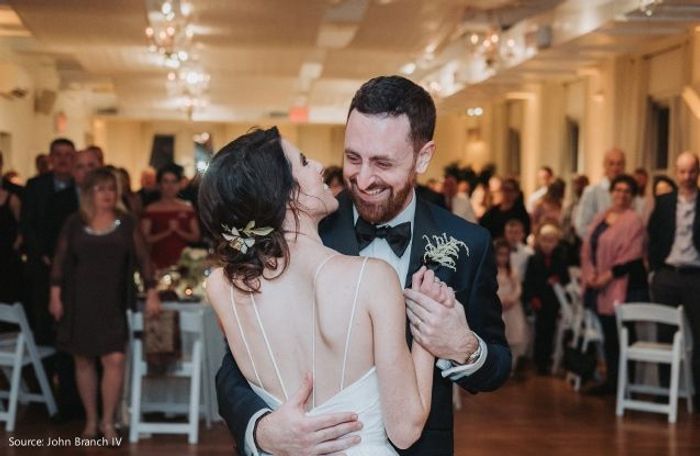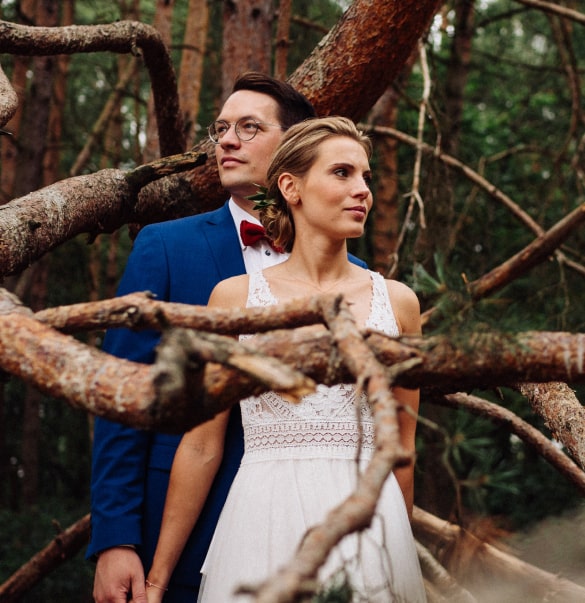From Beginner to Pro: 7 Essential Tips for Editing Wedding Photos
Updated October 4, 2023.

Wedding photography is more than just capturing moments. It involves understanding the distinct nature of photography and mastering post-processing techniques, which can take time.
In this post, we delve into the nuances of this process with Michaela Luyt, a professional photographer with over five years of experience. Whether you're a budding or seasoned photographer, these tips aim to elevate your editing skills, ensuring each wedding story is told with clarity, emotion, and artistic flair.
1. Understand the unique nature of wedding photography
Wedding photography stands apart from other genres. It's not just about capturing photos; it's about crafting a narrative that encapsulates the profound emotions and love story of two individuals uniting in matrimony.
This form of photography bears a significant responsibility, so here are tips that can help you understand its unique nature:
- Prioritizing Shots: Focus on live-action shots to bring the event's emotions to the forefront.
- Consistency: Ensure uniformity across all images, from tone to emotion.
- Meticulous Retouching: While retouching is essential, it's crucial to maintain the photo's natural essence.
- Attention to Detail: The post-processing phase is where the true artistry comes into play.
2. Invest time in editing wedding photos
The art of editing wedding photos is a meticulous endeavor, demanding both time and precision. Unlike other styles, where quick edits might suffice, wedding photos require a deeper level of attention to detail.
"On average, it spans over a couple of weeks, translating to 20 to 40 dedicated hours of work. This duration, however, can vary based on the photographer's other commitments and the volume of photos taken," explains Michaela.
It's important to manage your time correctly to deliver the images to clients promptly, especially for weddings, and Imagen can help you with that. Imagen use AI to simplify the culling phase of a photographer’s workflow, ensuring only the best shots are kept. But that's not all; Its algorithm elevates your style, granting more time for perfecting photos, and offering a 96% reduction in editing time while retaining creative control
Various tasks are performed during this period:
- Simple adjustments
- Color correction
- Cropping
- Retouching
The goal is to ensure that the final picture not only meets but exceeds the client's expectations, preserving memories in the most beautiful manner possible.
»Recharge your passion and combat burnout as a photographer with these tips
3. Communicate effectively with clients
A significant part of the process revolves around effective communication with clients. As photographers chronicle one of the most intimate and significant days in a couple's life, understanding their vision and expectations is paramount.
When it comes to effective communication, Michaela has some valuable tips to share:
- Preparing: Set the stage right before the shoot. Discuss package details, deliverables, and specific requirements with the couple.
- Aligning Visions: Having conversations with clients before the time is crucial to understanding and meeting their expectations for their wedding photography.
- Contractual Clarity: Implement a contract to detail services and set boundaries, ensuring both client expectations and the photographer's interests are protected.
- Open Communication: Keep channels open, especially during the editing process, allowing space for feedback and necessary revisions.
4. Maintain quality and timeliness
Couples are eager to relive their special day through photos, and while prompt delivery is appreciated, compromising on quality is not an option.
- Role of Experience: Over time, photographers develop a rhythm, understanding their pace to maintain image essence. However, experience needs to be complemented with the right tools and techniques.
- Batch Photo Editing: Grouping similar images, especially with consistent lighting, allows for uniform edits and time efficiency.
- AI profiles
: Using predefined settings tailored to the photographer's style ensures consistency and expedites the editing process. - Quality Assurance: While aiming for efficiency, it's crucial to conduct a thorough review before final delivery, ensuring each picture captures the wedding's magic authentically.
Common Mistake: One thing that is often overlooked during editing is the tendency to edit multiple photos without taking into account any differences in lighting. To maintain uniformity and authenticity, it's important to make sure that batch editing is only applied to similar photos.
» Discover more about what a photo editing style is and why it's important
5. Prepare for challenges and how to overcome them
Every profession comes with its set of challenges, and wedding photography is no exception. Given its emotional depth and the high stakes involved, photographers often find themselves navigating a myriad of obstacles, from technical issues to aligning with client expectations.
- Aligning Visions: While photographers have their unique style, it's vital to ensure that their artistic vision aligns with the client's aspirations.
- Handling Dissatisfaction: Post-editing challenges, such as client dissatisfaction, are inevitable. Regardless of a photographer's skill level, there will be times when revisions are necessary. It's essential to be flexible and accommodating but also to set clear boundaries.
- Overcoming Challenges: The essence of navigating wedding photography challenges lies in skill, communication, and adaptability. By mastering these, photographers can craft images that truly resonate with love and artistry.
Note: Offering a set number of revisions as part of the package can help manage expectations and ensure client satisfaction.
6. Improve post-processing techniques
The journey from being a novice to a seasoned wedding photographer is marked by continuous learning and refinement of skills, especially in the realm of post-processing. As technology evolves and trends shift, the tools and techniques used in editing also undergo transformations.
"The most important thing in any field is practice. Go practice your craft to the point of perfection, even if it's not perfect," adds Luyt.
- Diverse Learning: Diversifying learning resources is key. YouTube for example offers a range of tutorials, allowing photographers to learn from experts in new ways.
- Beyond Passive Learning: Learning goes beyond watching or reading. Feedback and hands-on experience lead to deeper understanding. Industry peers and clients offer valuable criticism.
- Power of Mentorship: Mentorship stands out as a significant growth accelerator. Working with experienced photographers allows beginners to grasp the intricacies of wedding photography.
- Holistic Improvement: Enhancing post-processing techniques involves a mix of continuous practice, varied learning sources, feedback, and mentorship.
7. Utilize AI tools for editing
Editing is where the raw photos are transformed, where the magic truly happens, and where the photographer's vision comes to life.
- Emotion Through Tone and Color: The hues and shades in a photo, like the golden glow of a sunset or the soft pastels of a beach setting, are instrumental in conveying the wedding's emotions. Ensuring consistency in tone and color across all images creates a harmonious and cohesive wedding album.
- Art of Retouching: While the allure of creating a flawless image is strong, it's essential to maintain the photo's natural essence.
- Role of Tools and Software: Lightroom offers an intuitive environment for basic edits and image organization, while Photoshop allows for more detailed and intricate modifications.
- Preserving Memories: Backing up photos is an absolute must. The value of these irreplaceable memories is immeasurable.
- Collaborative Efforts: Working with a second shooter or an editing assistant can bring a fresh viewpoint, ensuring that every detail, no matter how minute, is captured and refined.
With the right tools, techniques, and a keen eye for detail, every wedding photographer can ensure that their edits do justice to the memories they've captured.
Final Reflections: The Art and Craft of Wedding Photography
The path to creating timeless wedding memories is paved with practice, feedback, and a deep understanding of both the emotional and technical facets of the craft. Wedding photography is more than just capturing moments; it's about weaving narratives that stand the test of time.
By heeding these invaluable tips and insights and using Imagen to improve their editing skills, photographers can ensure that every captured moment resonates with authenticity and emotion.







